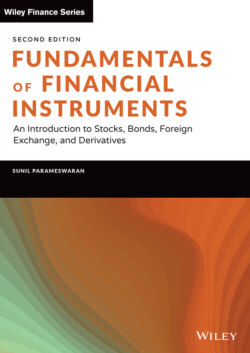Читать книгу Fundamentals of Financial Instruments - Sunil K. Parameswaran - Страница 95
На сайте Литреса книга снята с продажи.
EXAMPLE 2.13
ОглавлениеPatricia wants to deposit an amount of $P with her bank in order to ensure that she has $25,000 at the end of four years. If the bank pays 8% interest per annum compounded annually, how much does she have to deposit today?
The expression 1/(1 + r)N is the amount that must be invested today if we are to have $1 at the end of N periods, if the investment were to pay interest at the rate of r% per period. It is called the PVIF (Present Value Interest Factor). It too depends only on two variables, namely the interest rate per period and the number of periods. If we know the PVIF for a given interest rate and time horizon, we can compute the present value of any terminal cash flow by simply multiplying the quantum of the cash flow by the factor. The process of finding the principal corresponding to a given future amount is called discounting and the interest rate that is used is called the discount rate. Quite obviously, there is a relationship between the present value factor and the future value factor, for assumed values of the interest rate and the time horizon. One factor is simply a reciprocal of the other.
